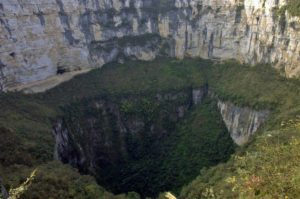Wonder
Tawi Atair sinkhole and cave
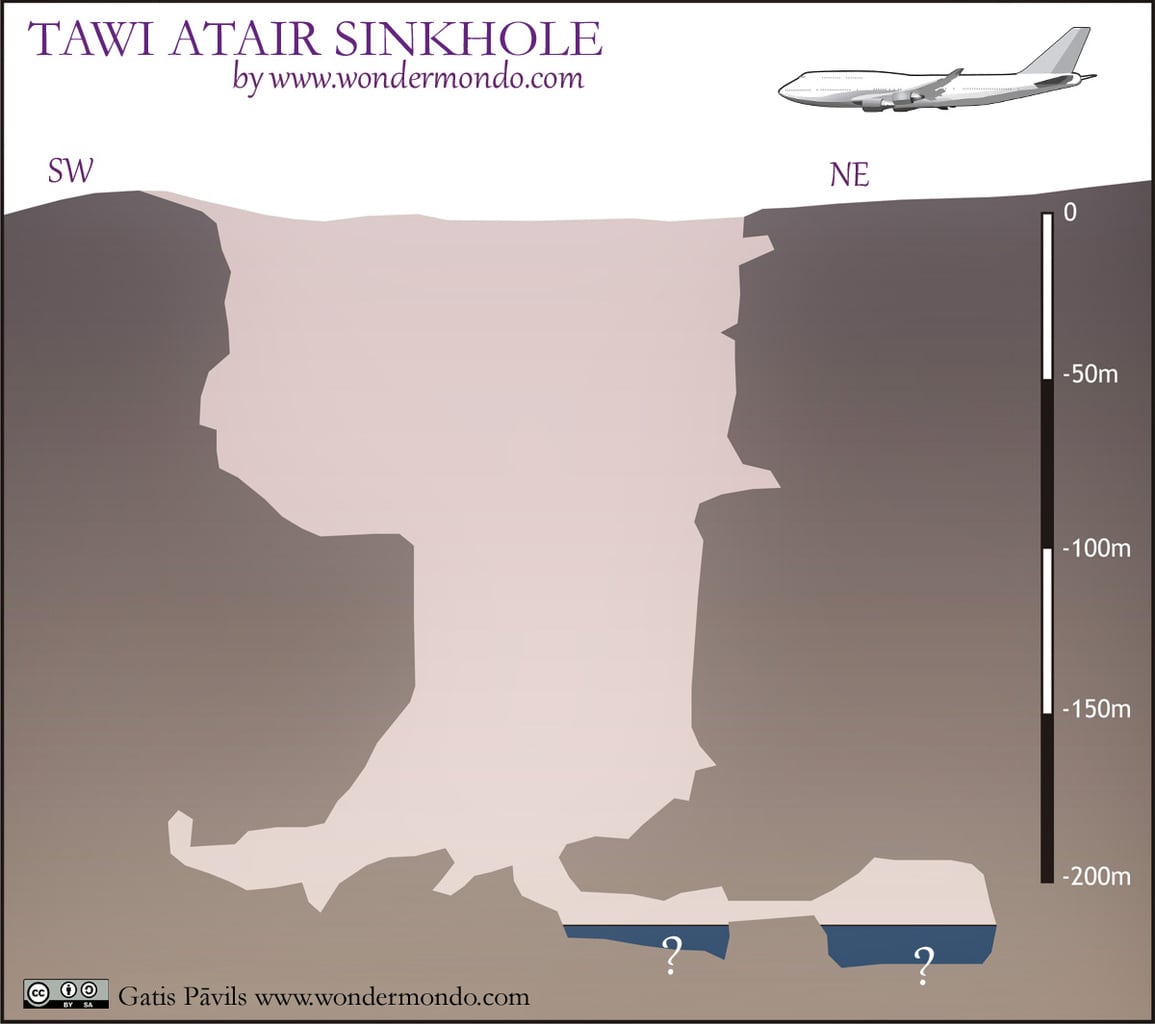
 In short
In short
One of the most impressive sinkholes in Oman is Tawi Atair (often – Tawi Atayr). But this structure is special not only due to its size – far in its depths lives a unique fish.
 43.3%
43.3%
GPS coordinates
Location, address
Alternate names
Depth of sinkhole
Map of the site
If you see this after your page is loaded completely, leafletJS files are missing.
 In detail
In detail
Giant pit
Local people earlier believed that the giant hole in Qara Mountains has been created by a meteorite. But in reality, this gap was formed by groundwater, by karst processes.
Tawi Atair is a very impressive limestone formation – at the surface level (680 m above the sea level) it is 140 m across in NE – SW direction and 100 m in NW – SE direction. In the lower half, it narrows down to 60 m across. The depth of the sinkhole is 211 m – like 60-floor high building. Volume – 975,000 m³. Such size is not exceptional – even 8.5 km further to the north-east there is Teiq sinkhole with 90 million m³ volume (one of the largest in the world), but nonetheless Tawi Atair is a very imposing structure with mostly vertical walls.
Tawi Atair might be formed by a collapse of the roof of a giant cave hall but just as well – by a gradual widening of fractures in the rock. This area of Oman contains much evidence of karst processes – here are located numerous other smaller sinkholes and many caves.
Walls of sinkhole contain multiple dripstone formations – stalactites, stalagmites, and others. These formations are located at a different height – they might testify that earlier, when the ceiling of this void was not collapsed, here was a cave – and this cave eroded downwards.
Some even believe that the passages of Tawi Atair are connected with the Teiq sinkhole.
Trees and birds
Tawi Atair is well known to local people since ancient times. During harsh winters people even lived inside the sinkhole, on the inner edge of this abyss where the temperature is more or less stable throughout the year.
Name of the sinkhole in Arabic sounds similar to "well of the birds". This name is well suited because there are very many birds living in this sinkhole.
Such explanation though has led to some discussions: next to the sinkhole is a village with the same name – some consider that sinkhole was named after the village. Here, in turn, can be discussed whether the village did not get its name from sinkhole – all over the world settlements get their names from indicative natural landmarks close by.
Sinkhole is a popular tourist destination with a car parking lot and visitor center next to it. Birds add a special feel to this unusual place – such an amount of singing birds is not usual in Oman. Unfortunately, the impressive view in most places is blocked by a dense growth of shrubs along the upper rims of the sinkhole.
Cave and unique fish
At the bottom of the sinkhole there is a continuation – cave passage in the north-eastern direction. This passage is located at the groundwater level and half-filled with water. The passage under the level of water has not been fully explored yet.
In 1980 in the lake of sinkhole there was found a new species of fish. This fish was named after one of the discoverers, a well-known researcher of Arabian caves Andy Dunsire: Garra dunsirei Banister, 1987. This unique organism lives only in this cave and there are no other freshwater fishes in a 600 km radius. Fish has very small eyes but seems to have a weak vision. In the total darkness of the cave, fish uses tentacles and other senses, not vision. It is pale yellow, some 3 – 6 cm long.
Existence of this fish is an important sign – this small fish is relict from the times when the climate in this area was different and there were permanent streams and lakes. Fish still has eyes – thus it was not too long ago when the ancestors of present-day cave fishes lived in daylight.
References
- Tawi Atayr The well of the birds. Lilian en Jan Schreurs Homepage. (excellent source of information about Oman – highly recommended!) Accessed on August 5, 2010
Tawi Atair is included in the following article:
 Linked articles
Linked articles
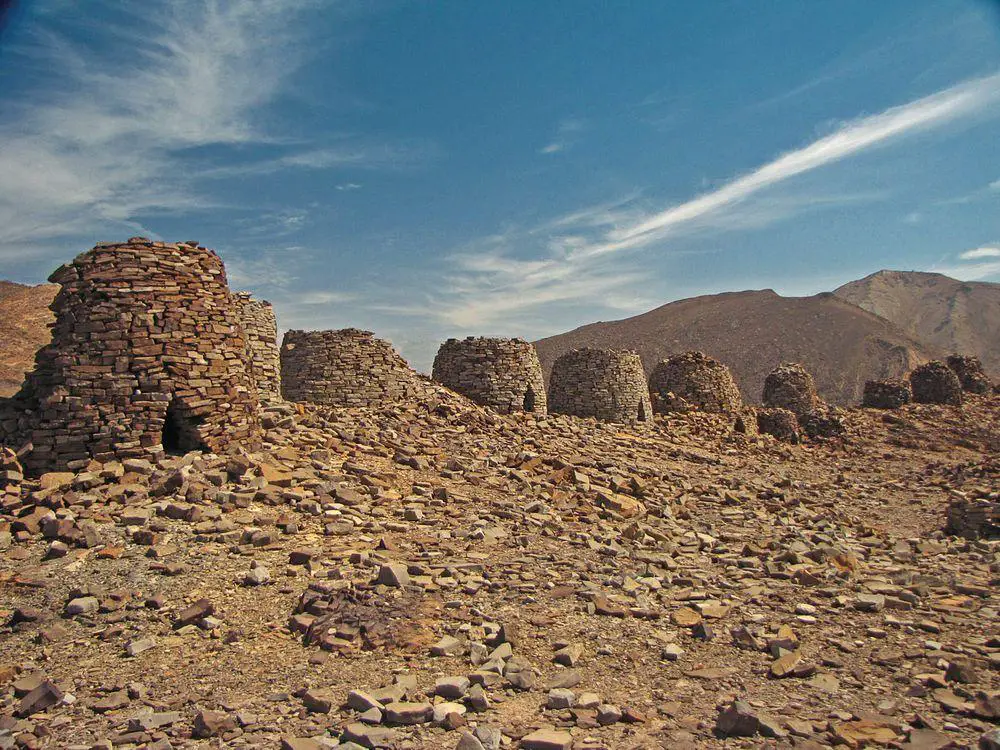
Wonders of Oman
Southern Arabia is the embodiment of fantasies about the mysterious, beautiful Arabia from One Thousand and One Nights. Oman with its breathtaking landscapes and mysterious monuments of history definitely represents a part of this realm.
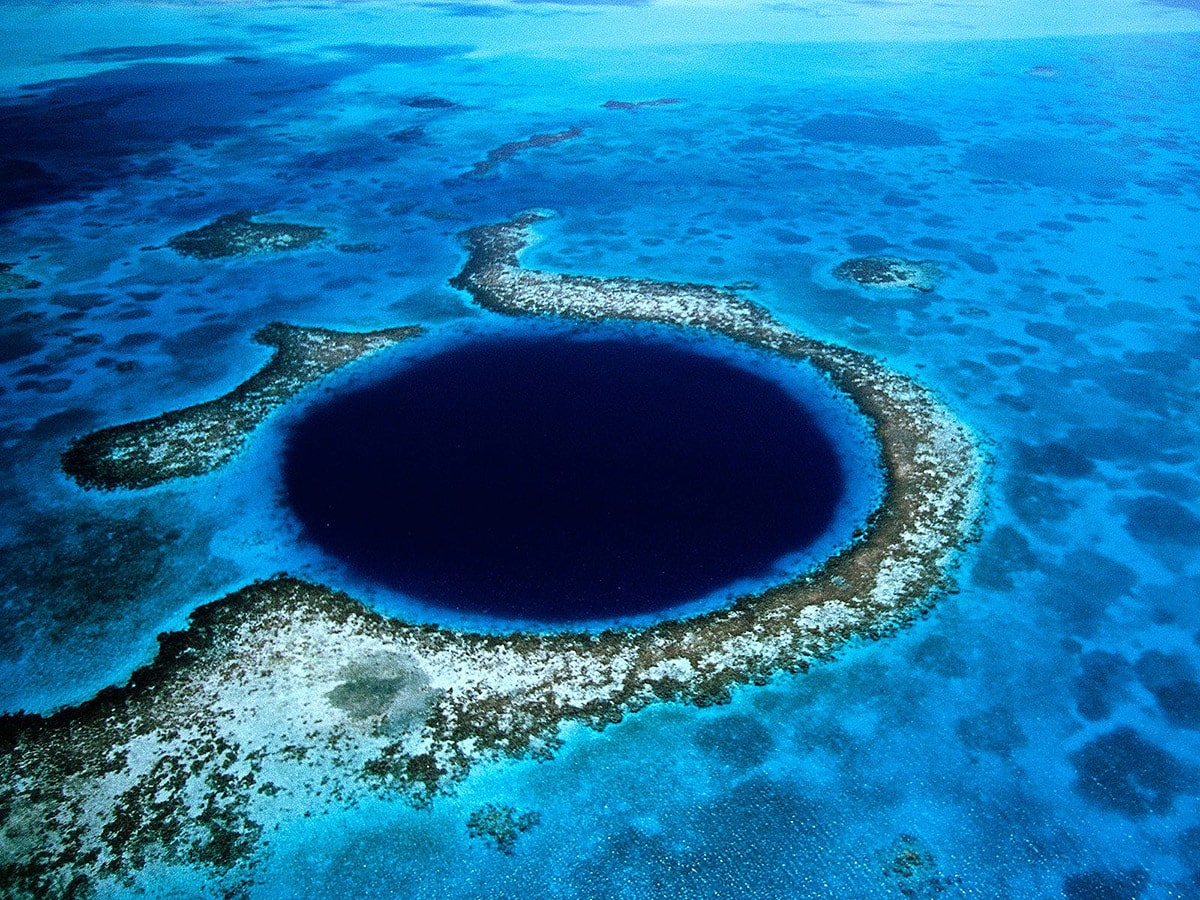
Sinkholes
This category includes outstanding sinkholes – large natural depressions or holes, which for most the part represent collapsed caves.
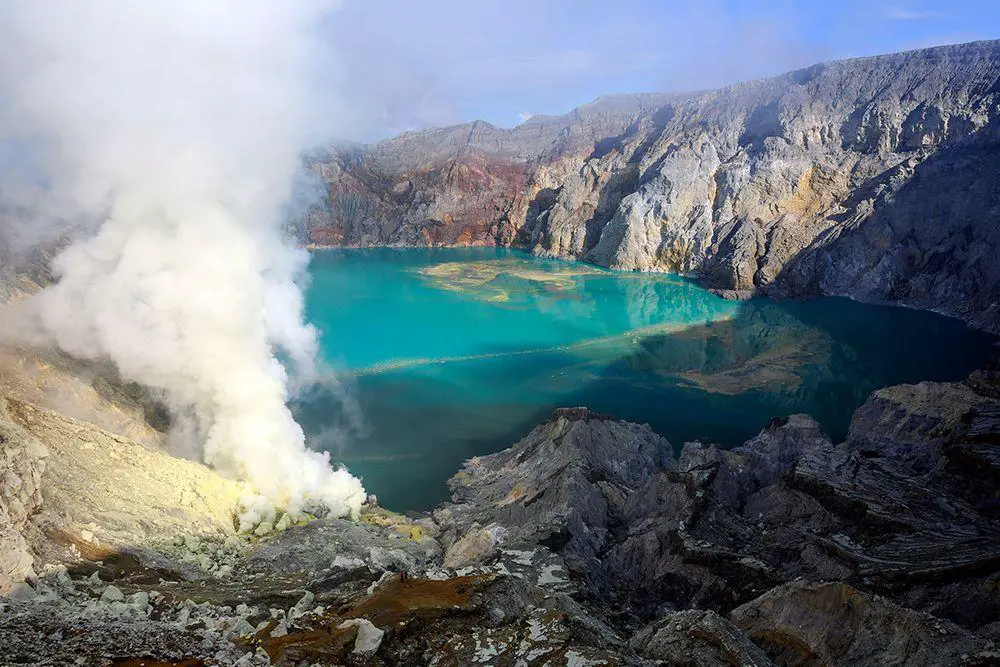
Lakes and streams
There are many factors that can make lakes, sea bays, or rivers unusual. Some lakes have unusual chemical properties and even do not contain water at all – such as lava lakes. Others may have unusual animals living in them or… legends about such animals.
 Recommended books
Recommended books
Encyclopedia of Caves
Encyclopedia of Caves is a self-contained, beautifully illustrated work dedicated to caves and their unique environments. It includes more than 100 comprehensive articles from leading scholars and explorers in 15 different countries. Each entry is detailed and scientifically sound, yet accessible for students and non-scientists.
Introduction to the Caves of Oman
Caves of Oman provides important information on the geology and formation of caves. Within its 128 pages, the authors emphasize the main features of every cave so that “Caves of Oman” can be used as a guide for visitors and explorers. Ninety maps and graphics are included in addition to 90 photographs. It also provides information on cave formation which started millennia ago through the natural process of melting and eroding.

